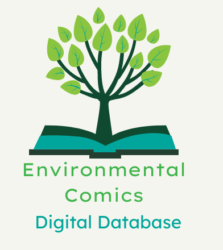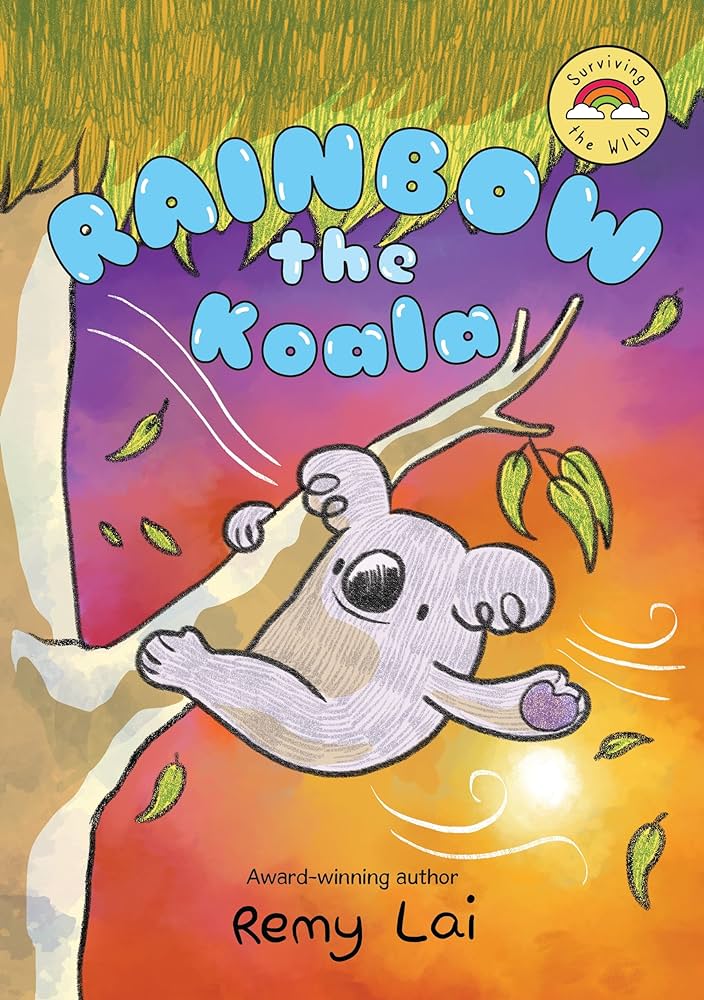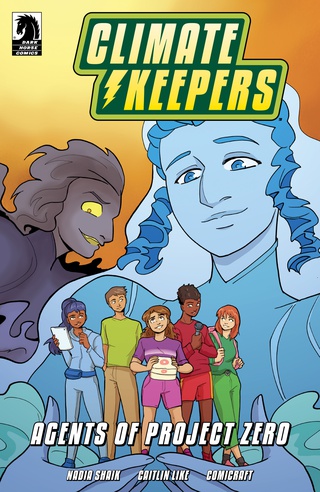“It definitely wasn’t easy, but you’re restoring the forest to its healthy state. You left the parks better than when you started–and we hope they left you better as well” — Director of the Parks Department, No Ivy League, p. 200.
| Creator(s) | Hazel Newlevant (author) |
| Publisher | Easel Ain’t Easy |
| Publication Date | 2011 |
| Genre | Memoir, Nonfiction |
| Environmental Themes and Issues | Invasive Species, Habitat Destruction, Plants, Educational Nature Facts, Veganism |
| Protagonist’s Identity | Hazel: White nonbinary teenage protagonist The youth crew includes Black and Hispanic characters |
| Protagonist’s Level of Environmental Agency | Level 3: Moderate, Plot-Driven Environmental Agency |
| Target Audience | Young Adult |
| Settings | Portland, Oregon |
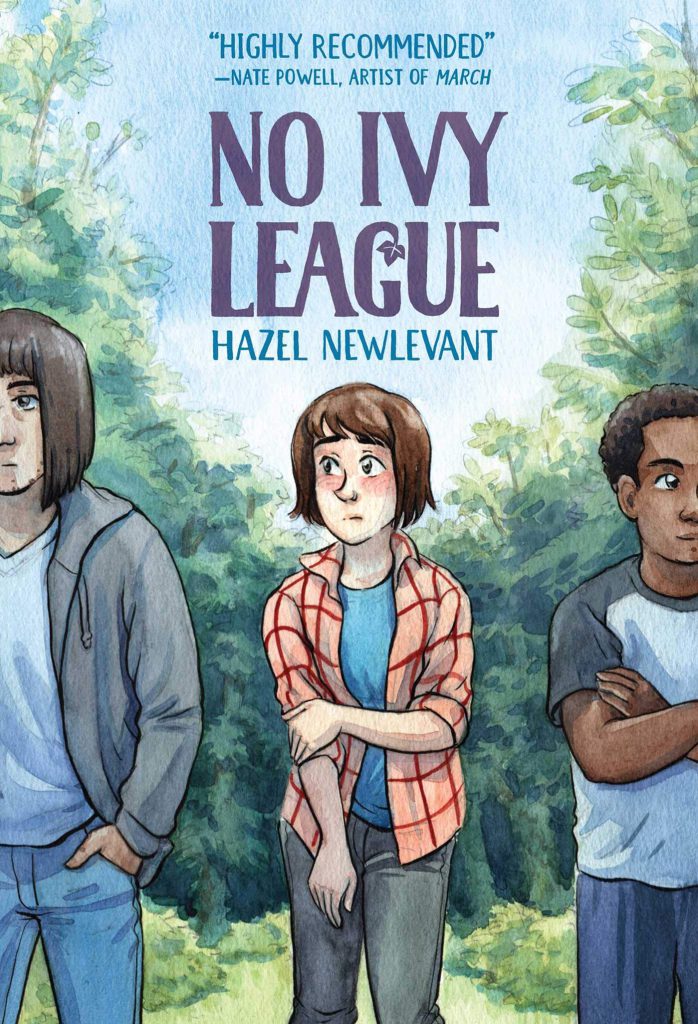
Environmental Themes
This graphic memoir recounts author Hazel Newlevant’s experience working as a member of a youth conservation crew in Portland, Oregon when they were 17 years old. The crew works to remove an invasive species, English ivy, from the woods. Initially, Hazel joins the crew to earn money for concert tickets. They soon discover that the rest of the crew consists of “at-risk youth,” including youth of color. As a white, homeschooled teenager from an affluent family, Hazel struggles to fit in with these coworkers. In several instances, male teens on the crew make sexist comments to Hazel, culminating in a tense encounter where a Black boy makes a graphic sexual remark to them. Though the crew leaders had previously ignored the boy’s sexual harassment of a Black girl on the crew, they fire him after the white Hazel reports the incident.
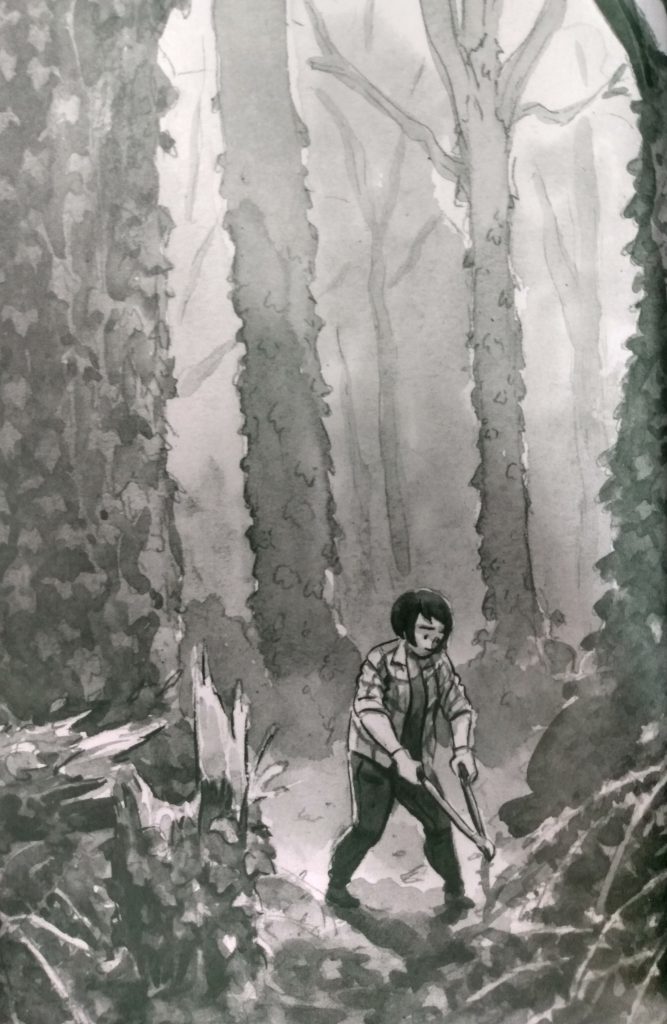
When Hazel discusses the situation with their parents, their mother reveals that they homeschooled Hazel as a response to her own negative experiences with public school integration. In response, Hazel does research on racial disparities in Portland and reflects on their white privilege. By the conclusion of the comic, they manage to develop friendships with the other crew members, despite their different backgrounds. However, as Jazmine Joyner notes in a review of the memoir, “There is no confrontation or conversation about the systemic white supremacy that Hazel’s mom actively participates in by putting them in homeschool. Or any resolution to the fact that the counselors never gave Kelsey the same justice that Hazel received for their harassment” (Hazel). As a result, while the comic effectively portrays Hazel’s increasing awareness of social issues, the narrative largely fails to satisfactorily address the troubling questions that it raises about the legacy of racism and white privilege.
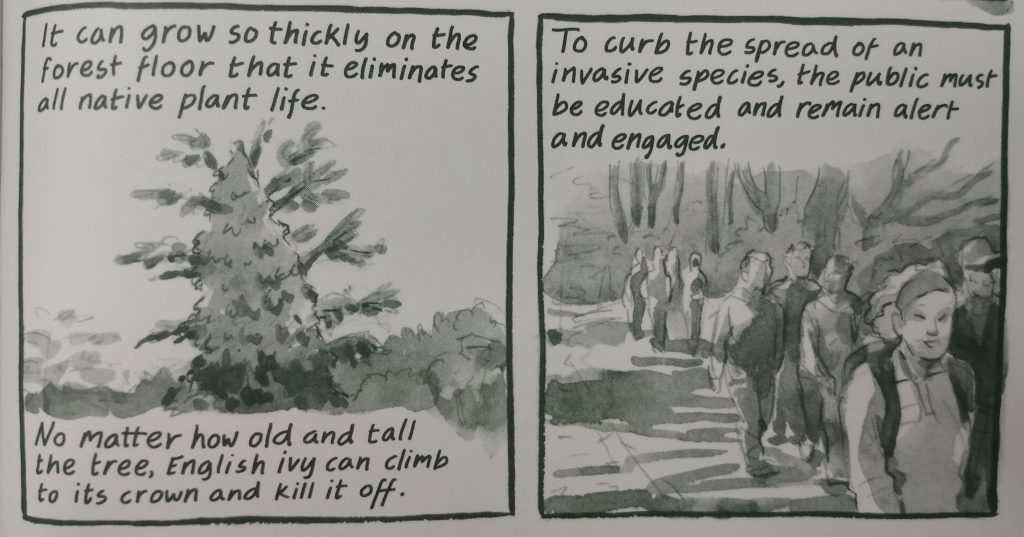
While much of the graphic novel revolves around Hazel’s coming-of-age experience, Newlevant also educates the reader about English ivy. The crew leaders instruct the youth about the dangers posed by the plant, saying, “If left unchecked, ivy will choke off trees and dominate the ecosystem. We save trees by performing ‘lifesavers’ where we remove all the ivy in a 6-foot radius” (Newlevant 22). Later, the youth crew takes a field trip to a water pollution control lab. There, they watch a video about English Ivy and complete a native plant identification activity. The comic concludes with the Director of the Parks Department speaking to the youth crew about the impact they have had over the summer, noting that the teenagers helped to maintain 130,000 feet of trail and remove 230,000 square feet of ivy. The director states, “It definitely wasn’t easy, but you’re restoring the forest to its healthy state” (Newlevant 201)
Additional Resources
Joyner, Jazmine. “Hazel Newlevant’s No Ivy League a Challenging Read.” Women Write About Comics, 4 September 2019, https://womenwriteaboutcomics.com/2019/09/no-ivy-league-review/.
